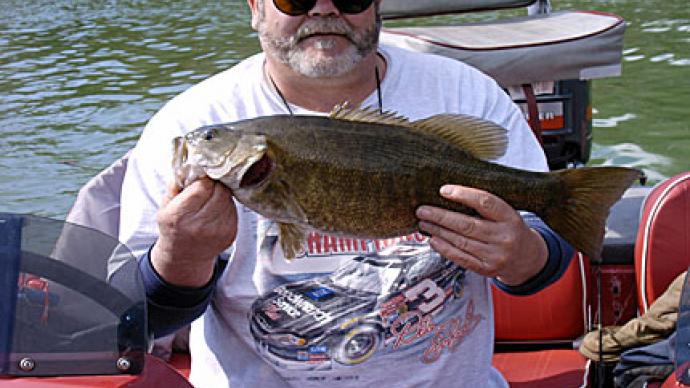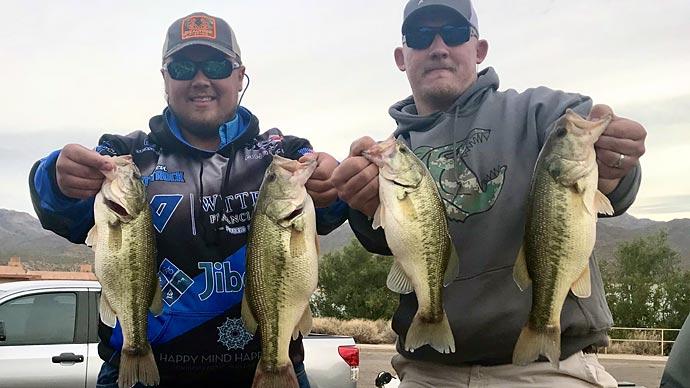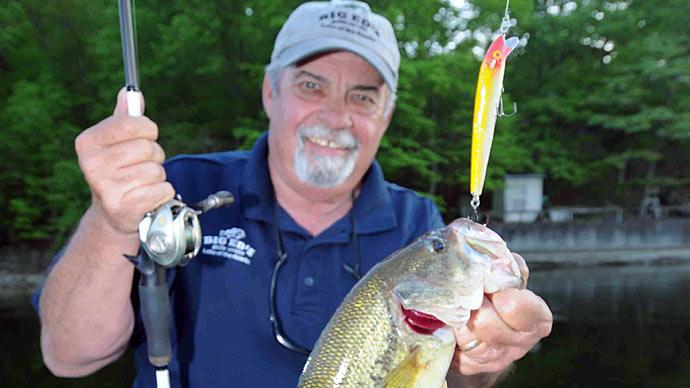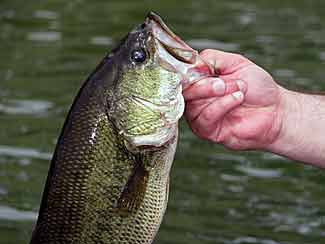
This column was inspired by a couple different good discussions on the Pond Boss website forum. The topic relates to bluegill management, but I thought the answer actually was tied back to largemouth bass management. After all, predators affect prey, and prey supplies affect predators.
Today, we're going to have a quiz. First of all, I'll give you some background information. Next, you can decide what likely happened in this setting. Then, I'll show you what actually happened. No, I won't be assigning any grades. This is supposed to be a fun exercise.
Background Information: Protected slot length limits (for example, all fish between 12 and 15 inches must be immediately released, while smaller and larger bass can be harvested) have been used to restructure high-density, slow-growing largemouth bass populations in small impoundments. Fishery biologists have documented successful uses of such a regulation in both private ponds and small public impoundments. When anglers have been willing to harvest small largemouth bass, that exercise results in improved bass population size structure. Typically, the management goal is to reduce density of sub-slot fish, improve growth rates, and eventually increase the sizes of largemouth bass in the water body. On public waters, it often takes a pretty good public relations effort to persuade anglers to harvest small bass, as catch-and-release ethic is pretty well entrenched these days. [We need to think "selective harvest" rather than strictly "catch and release."]
In this case, I want you to think beyond population-level management of bass to the other fishes in the impoundment. As the largemouth bass is a top-level predator in many small waters, might changes in bass abundance be related to abundance and sizes of prey species? Think about it.
I'm going to use an actual example, a 101-acre impoundment located in western Missouri. It has a maximum depth of about 40 feet, and water transparency typically ranges from 2 to 3 feet. The fish community included largemouth bass, bluegill, white crappie, channel catfish, and gizzard shad. The largemouth bass population was managed with a 15-inch minimum length limit (all fish less than 15 inches had to be immediately released) beginning in Year 1 of this study. However, as so often happens, largemouth bass quickly overpopulated. Thus, the 12 to 15-inch protected slot length limit was imposed prior to the fish community sample in Year 4.
At this point, take a look at the electrofishing data for largemouth bass in the following table. Of all the 8-inch and longer bass caught, you can see the percent that were over 12 inches and the percent that were over 15 inches each year. The average length of fish at age 3 is reported so you can assess changes in growth rates for the bass. (See chart below).
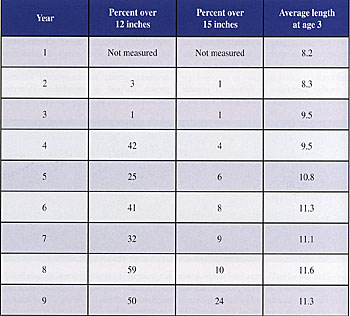
Now remember, the management objective was to increase the overall size structure of largemouth bass in this impoundment. The protected slot limit started in Year 4, and you have sampling data through Year 9. Was the protected slot length limit effective at improving the largemouth bass size structure? How did you decide on an answer?
When I look at this table, it is quite apparent the regulation met its objective. The percent of 12 inch bass in the population gradually increased. Most biologists like to see this number between 40 and 70 for largemouth bass. The quick response in Year 4 may seem "too soon." However, the regulation went into effect in January, and sampling did not occur until the end of summer. The percent of 15 inch bass really tells the story. It took 5 years to get substantial numbers of these larger bass in the population. Population changes do not occur overnight. Finally, and perhaps most importantly, look at the increase in bass growth rates. Reaching 11.5 inches at age 3 is much better than reaching only 8 inches at age 3. Some of you pondmeisters might think these are actually slow growth rates, but they are pretty darn typical for Midwestern impoundments.
The Test Question: Now, on to your quiz for the day! What do you predict happened to the growth rate of bluegills, and to the sizes of bluegills in the impoundment? Once you have an answer in mind, continue on to see the actual results.
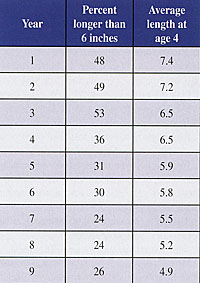
Test Question, continued: I already established the protected slot length reduced the abundance of largemouth bass. Bass growth rates increased, and more bass grew to larger sizes. However, there often is a trade-off between predator and prey. This is especially true in ponds and small impoundments.
Now, take a look at the bluegill sampling data in the following table. The management biologist, who now happens to be the fisheries management chief for the Missouri Department of Conservation, sampled bluegills at the same time as he sampled the largemouth bass. Remember, the protected slot regulation started in Year 4.
As you can see, the percent of 3-inch and longer bluegills that exceeded 6 inches declined after the slot regulation was placed on largemouth bass. There were fewer overall bass, and fewer bass smaller than 12 inches in the impoundment. As a result, there was reduced predation on small bluegills (let's say 1-4 inches or so). Thus, bluegill abundance increased, growth slowed, and fewer bluegills were of harvestable size. This is a classic example of the inter-relationship between largemouth bass and bluegills in small impoundments.
Reprinted with permission from Pond Boss Magazine

